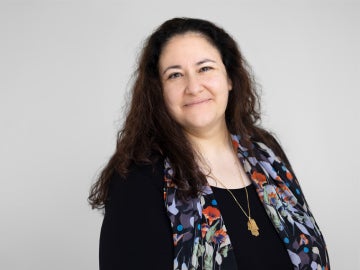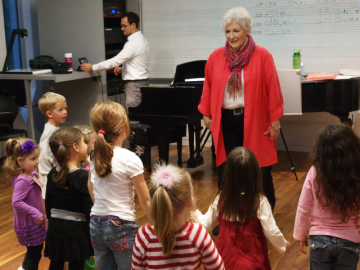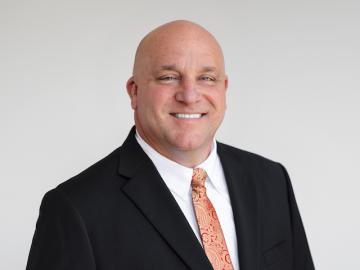Professors, Library Use Digital Scholarship to Create Interdisciplinary Projects
August 1, 2016
Lisa Gulasy
Pedagogical evidence suggests students learn best when they are actively engaged. This is why many Oberlin professors supplement their lectures and exams with hands-on projects and other assignments. In recent semesters, several professors have taken the “learning by doing” approach to a new level by incorporating digital tools to assist with researching, presenting, and preserving student projects. This new approach is a growing trend in academia called digital scholarship.
Digital scholarship, as defined by Amy Smith Rumsey, director of the Scholarly Communication Institute, in “New Model Scholarly Communication: Road Map for Change,” is the use of digital evidence and method, digital authoring, digital publishing, digital curation and preservation, and digital use and reuse of scholarship. At Oberlin, Digital Initiatives Coordinator Megan Mitchell serves as a key resource for professors who are interested in exploring digital scholarship projects, including those funded by the Andrew W. Mellon Foundation as part of a collaborative grant with the Five Colleges of Ohio.
“One platform we’ve been using is Omeka,” Mitchell says, which is a flexible open source web-publishing platform for the display of library, museum, archives, and scholarly collections and exhibits. “Omeka is a fairly easy-to-use program that allows you to upload files, images, sound files, and videos, enter metadata about the files, and provide text to create a narrative.”
In fall 2015, Mitchell assisted three classes that created digital exhibits using Omeka, including students in Professor and Chair of Comparative American Studies Wendy Kozol’s level 200 Visible Bodies and the Politics of Sexuality course. “The course is about visual culture studies, learning different methodologies for studying visual images,” Kozol says. “I wanted my students to analyze individual images and then put them together to tell a story.”
The idea for the digital project sprang from the previous semester when Kozol had assisted Associate Professor of English Wendy Hyman and the students in her spring 2015 senior seminar Words and Things with creating the Allen Memorial Art Museum exhibit The Body: Looking In and Looking Out. “I was thinking, ‘How can I build on what [Hyman’s] students did?’ I was really excited about this idea of an exhibition,” she says. Instead of creating a physical museum exhibit, which Kozol says, takes years and is more appropriate of a project for small class of advanced students, she contacted Mitchell about creating a digital exhibit.
“We started meeting over the summer, learning together about Omeka and setting up a plan for how we would train the students to use Omeka and how they would make selections of the work they wanted to include in their exhibit,” Mitchell says. “I relied heavily on Megan. She worked with us on every step,” Kozol says. “It turned out Omeka wasn’t that complicated to learn, despite all of my anxieties.”
In spring 2016, Greggor Mattson, associate professor of sociology and chair of the gender, sexuality, and feminist studies program, and Libby Murphy, associate professor of French and chair of the French and Italian department, began working with Mitchell to create A la recherche des femmes perdues (In search of lost women), a digital humanities project supported by a grant from the Sherman-Fairchild Foundation.
For the project, students in Mattson’s Prostitution and Social Control course were tasked with creating exhibits by examining several primary documents, including scans of the book De la Prostitution dans la Ville de Paris (On Prostitution in the City of Paris) by French doctor Alexandre Parent Duchâtelet—selections of which were translated by students in a 2013 French course—photographs of some 8,000 Paris police documents taken by Mattson and Murphy during a summer 2015 research trip, and Allen Memorial Art Museum lithographs of lorettes (a class of prostitutes between the upper class courtesan and lower class streetwalker). Students also incorporated outside works of art and modern-day content about prostitution and the treatment of women including memes and tweets.
Students in Murphy’s class created exhibits on 19th century French prostitution and sexuality and transcribed and translated police archive documents, providing further explanation as to the overall view of women in France in the 19th century.
As to why the professors turned to Mitchell for help creating this project, Murphy says, “We just knew we needed the campus experts to help us. I don’t know that we would have had the confidence to take something like this on without knowing there was already an existing support network out there.” In addition to Mitchell, Murphy and Mattson credit Kozol and Associate Professor of Anthropology Amy Margaris and Professor of History, Africana Studies, and Comparative American Studies and Chair of the History Department Renee Romano—both of whom also created digital projects using Omeka—with helping make their project a success.
According to those interviewed, there are a number of reasons creating digital projects can be more beneficial to students than traditional assignments such as research papers or in-class presentations. Mitchell, Mattson, and Murphy all pointed out just how easy digital projects are to share with a wider audience. Students proud of their work can easily share it with friends and family and even potential employers.
Mattson also said that creating online projects makes students’ work more accessible to other researchers, who can find great value in the material. “[For this project], I had two groups that focused on prostitution and motherhood. The works they cite in their exhibits is all the material in English about prostitution and motherhood. But they also have these English translations of the French documents. It’s a lot of good material that other scholars may find useful.”
“Digital scholarship also taps into some different skills,” Mitchell says. “When you write a research paper, for example, you’re doing long-form prose. But when you’re writing for the web, you can’t use as many paragraphs and pages to tell the story. You need to think what the most important things are and how you can convey them.” Additionally, students gain experience using web publishing platforms and learn how to make content easily searchable online with metadata.
Mitchell says she looks forward to continuing her work with Mattson and Murphy and with Kozol, who plans to create a new digital exhibit with students enrolled in her Spring 2017 Visible Bodies and the Politics of Sexuality course. The professors interviewed encourage any professors considering having their students create digital projects reach out to Mitchell as soon as possible to discuss the possibilities.
“It is more work to create a digital project than it is to lecture or have fixed discussions around readings, but it’s worth it,” Mattson says. “Not only were the exhibits interesting, but humanities and social sciences students learned what it’s like to conduct original research. The frustrations, dead ends, and confusions they experienced are the real process of research.”
“The students really took ownership of the material,” Murphy adds. “The preliminary feedback from students is that they enjoyed it, and while it was a massive undertaking, we really enjoyed it too. It was just more fun for everybody.”
To see the abovementioned exhibits and others created with support from library staff, visit digitalcollections.oberlin.edu, click on Browse and then Exhibits. Faculty and students interested in exploring digital scholarship should contact Megan Mitchell at megan.mitchell@oberlin.edu.
You may also like…
Remembering Former Visiting Assistant Professor Leila Ben-Nasr
Leila Ben-Nasr, a former visiting assistant professor of comparative American studies, died on November 28, 2025.
Oberlin Community Remembers a Beloved Retired Professor
A member of Oberlin faculty for 13 years, Peggy Bennett was known by students and the Oberlin community for creating and leading MusicPlay, a preschool classroom and learning lab run as part of the...
Eric Rooks Named Director of Campus Safety at Oberlin
Longtime public servant emphasizes collaborative partnerships and kindness.


